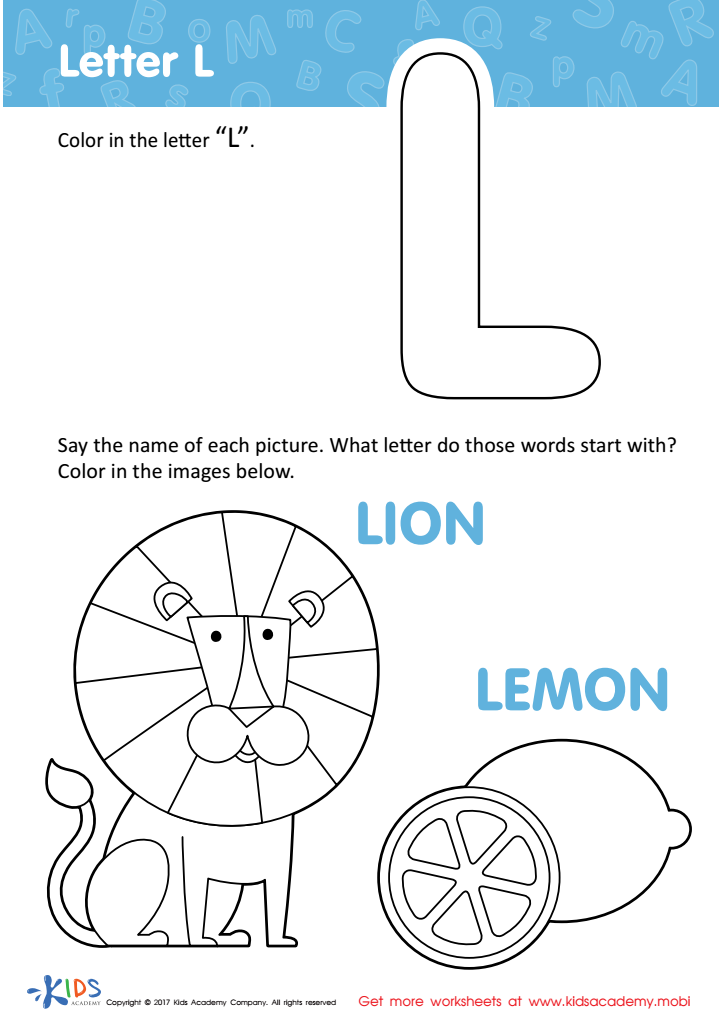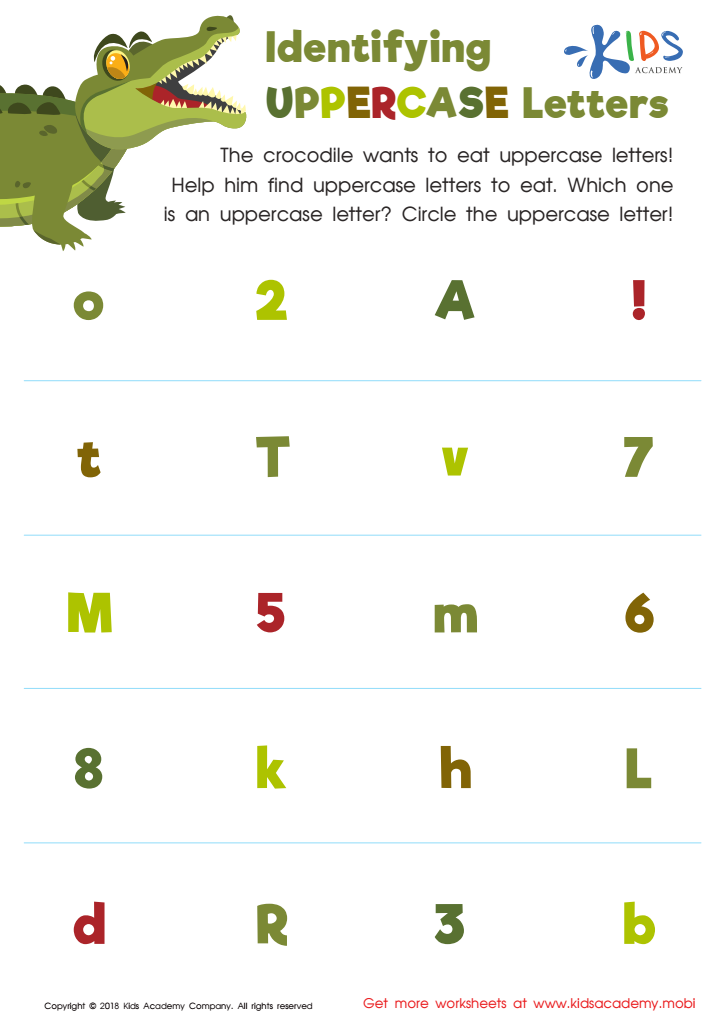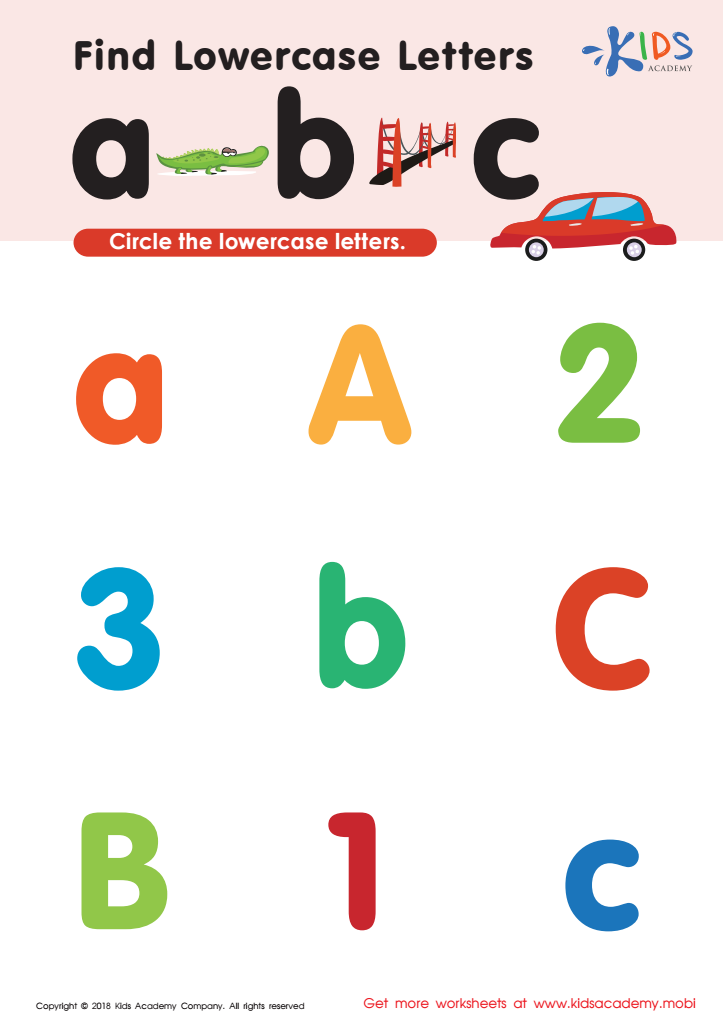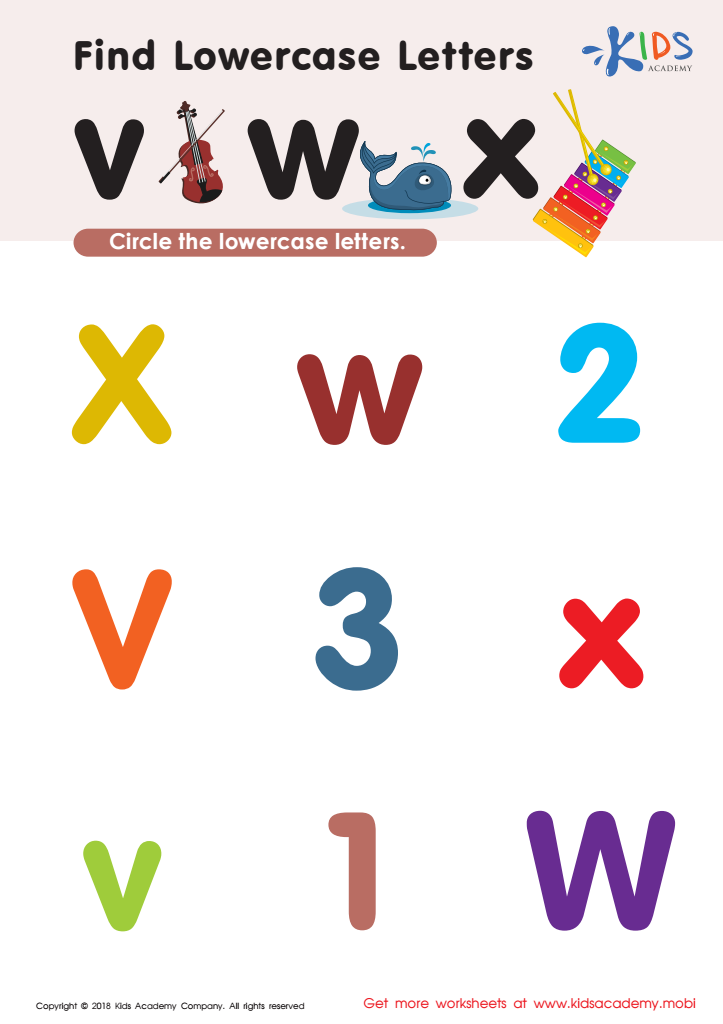Visual discrimination skills Normal Letter Recognition Worksheets for 5-Year-Olds
5 filtered results
-
From - To
Enhance your 5-year-old's reading foundation with our Visual Discrimination Skills Normal Letter Recognition Worksheets. Designed to boost letter recognition, these engaging activities help young learners differentiate between letters and refine their visual perceptual skills. Perfect for preschoolers and kindergartners, our worksheets make learning enjoyable and effective, fostering essential early literacy skills. Encourage your child to practice identifying, matching, and distinguishing letters with these expertly crafted worksheets, setting them up for reading success. Visit Kids Academy to download and print these valuable resources, specially tailored to support your child's educational journey.


Letter L Coloring Sheet


Find Uppercase Letters A, B, and C Worksheet


Identifying Uppercase Letters Worksheet


Find lowercase letters a b c Worksheet


Find Lowercase Letters v w x Worksheet
Parents and teachers should prioritize the development of visual discrimination skills in 5-year-olds because these skills are foundational for successful reading and writing. Visual discrimination enables children to distinguish differences in shapes, so they can differentiate between letters and numbers. For example, understanding the difference between 'b' and 'd' or 'p' and 'q' prevents common reading and writing errors.
Normal letter recognition, a key component of visual discrimination, empowers young learners to identify and understand that each letter has a unique shape, name, and sound. This skill is crucial for early literacy development because it impacts a child's ability to decode words, comprehend text, and spell accurately. Without strong visual discrimination skills, children may struggle with these fundamental tasks, leading to frustrations and delays in acquiring essential academic abilities.
Moreover, visual discrimination aids in visual memory, an important aspect of overall cognitive development. Enhanced visual memory helps children remember sight words, follow written instructions, and engage more meaningfully in classroom activities. Ensuring that 5-year-olds develop these skills prepares them for a smoother transition into more advanced academic work and fosters a positive attitude toward learning. By investing in these skills early, parents and teachers set a strong foundation for future educational success.
 Assign to My Students
Assign to My Students





















